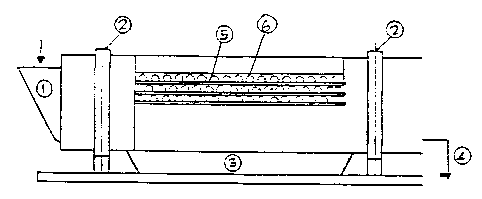Some of the information on this Web page has been provided by external sources. The Government of Canada is not responsible for the accuracy, reliability or currency of the information supplied by external sources. Users wishing to rely upon this information should consult directly with the source of the information. Content provided by external sources is not subject to official languages, privacy and accessibility requirements.
Any discrepancies in the text and image of the Claims and Abstract are due to differing posting times. Text of the Claims and Abstract are posted:
| (12) Patent: | (11) CA 2000813 |
|---|---|
| (54) English Title: | RIDDLING DEVICES OF URBAN SOLID GARBAGE |
| (54) French Title: | DISPOSITIFS DE CRIBLAGE POUR DECHETS URBAINS SOLIDES |
| Status: | Term Expired - Post Grant Beyond Limit |
| (51) International Patent Classification (IPC): |
|
|---|---|
| (72) Inventors : |
|
| (73) Owners : |
|
| (71) Applicants : |
|
| (74) Agent: | SMART & BIGGAR LP |
| (74) Associate agent: | |
| (45) Issued: | 2000-08-29 |
| (22) Filed Date: | 1989-10-16 |
| (41) Open to Public Inspection: | 1990-04-14 |
| Examination requested: | 1996-10-10 |
| Availability of licence: | N/A |
| Dedicated to the Public: | N/A |
| (25) Language of filing: | English |
| Patent Cooperation Treaty (PCT): | No |
|---|
| (30) Application Priority Data: | ||||||
|---|---|---|---|---|---|---|
|
Improvements of riddling devices of urban solid waste where,
outside the riddling cylinder, a few reeds, both continuous and
discontinuous, are applied, overhanging with respect to the same
riddling cylinder and of such a height which is proportional to
the dimensions of the holes, with the reeds having, preferably,
a longitudinal orientation and being they, furthermore, orthogonal
with respect to the external surface of the cylinder or being they
slightly inclined with respect to the radial direction in a
direction opposite to the direction of rotation of the riddling
cylinder.
Note: Claims are shown in the official language in which they were submitted.
Note: Descriptions are shown in the official language in which they were submitted.

2024-08-01:As part of the Next Generation Patents (NGP) transition, the Canadian Patents Database (CPD) now contains a more detailed Event History, which replicates the Event Log of our new back-office solution.
Please note that "Inactive:" events refers to events no longer in use in our new back-office solution.
For a clearer understanding of the status of the application/patent presented on this page, the site Disclaimer , as well as the definitions for Patent , Event History , Maintenance Fee and Payment History should be consulted.
| Description | Date |
|---|---|
| Inactive: Expired (new Act pat) | 2009-10-16 |
| Inactive: Late MF processed | 2007-10-30 |
| Letter Sent | 2007-10-16 |
| Inactive: IPC from MCD | 2006-03-11 |
| Inactive: IPC from MCD | 2006-03-11 |
| Inactive: Late MF processed | 2006-01-31 |
| Letter Sent | 2005-10-17 |
| Grant by Issuance | 2000-08-29 |
| Inactive: Cover page published | 2000-08-28 |
| Inactive: Final fee received | 2000-05-19 |
| Pre-grant | 2000-05-19 |
| Notice of Allowance is Issued | 1999-11-29 |
| Letter Sent | 1999-11-29 |
| Notice of Allowance is Issued | 1999-11-29 |
| Inactive: Application prosecuted on TS as of Log entry date | 1999-11-25 |
| Inactive: Status info is complete as of Log entry date | 1999-11-25 |
| Inactive: Approved for allowance (AFA) | 1999-11-03 |
| Inactive: Office letter | 1997-10-15 |
| Small Entity Declaration Determined Compliant | 1997-10-07 |
| Request for Examination Requirements Determined Compliant | 1996-10-10 |
| All Requirements for Examination Determined Compliant | 1996-10-10 |
| Application Published (Open to Public Inspection) | 1990-04-14 |
There is no abandonment history.
The last payment was received on 1999-10-08
Note : If the full payment has not been received on or before the date indicated, a further fee may be required which may be one of the following
Patent fees are adjusted on the 1st of January every year. The amounts above are the current amounts if received by December 31 of the current year.
Please refer to the CIPO
Patent Fees
web page to see all current fee amounts.
| Fee Type | Anniversary Year | Due Date | Paid Date |
|---|---|---|---|
| MF (application, 8th anniv.) - small | 08 | 1997-10-16 | 1997-10-07 |
| MF (application, 9th anniv.) - small | 09 | 1998-10-16 | 1998-10-08 |
| MF (application, 10th anniv.) - small | 10 | 1999-10-18 | 1999-10-08 |
| Final fee - small | 2000-05-19 | ||
| MF (patent, 11th anniv.) - small | 2000-10-16 | 2000-10-04 | |
| MF (patent, 12th anniv.) - small | 2001-10-16 | 2001-10-01 | |
| MF (patent, 13th anniv.) - small | 2002-10-16 | 2002-10-01 | |
| MF (patent, 14th anniv.) - small | 2003-10-16 | 2003-10-14 | |
| 2004-09-28 | |||
| MF (patent, 15th anniv.) - small | 2004-10-18 | 2004-09-28 | |
| Reversal of deemed expiry | 2007-10-16 | 2006-01-31 | |
| MF (patent, 16th anniv.) - small | 2005-10-17 | 2006-01-31 | |
| 2006-01-31 | |||
| MF (patent, 17th anniv.) - small | 2006-10-16 | 2006-10-05 | |
| 2006-10-05 | |||
| MF (patent, 18th anniv.) - standard | 2007-10-16 | 2007-10-30 | |
| Reversal of deemed expiry | 2007-10-16 | 2007-10-30 | |
| MF (patent, 19th anniv.) - standard | 2008-10-16 | 2008-10-09 |
Note: Records showing the ownership history in alphabetical order.
| Current Owners on Record |
|---|
| IMPRESA A. CECCHINI & C. S.R.L. |
| Past Owners on Record |
|---|
| MANLIO CERRONI |